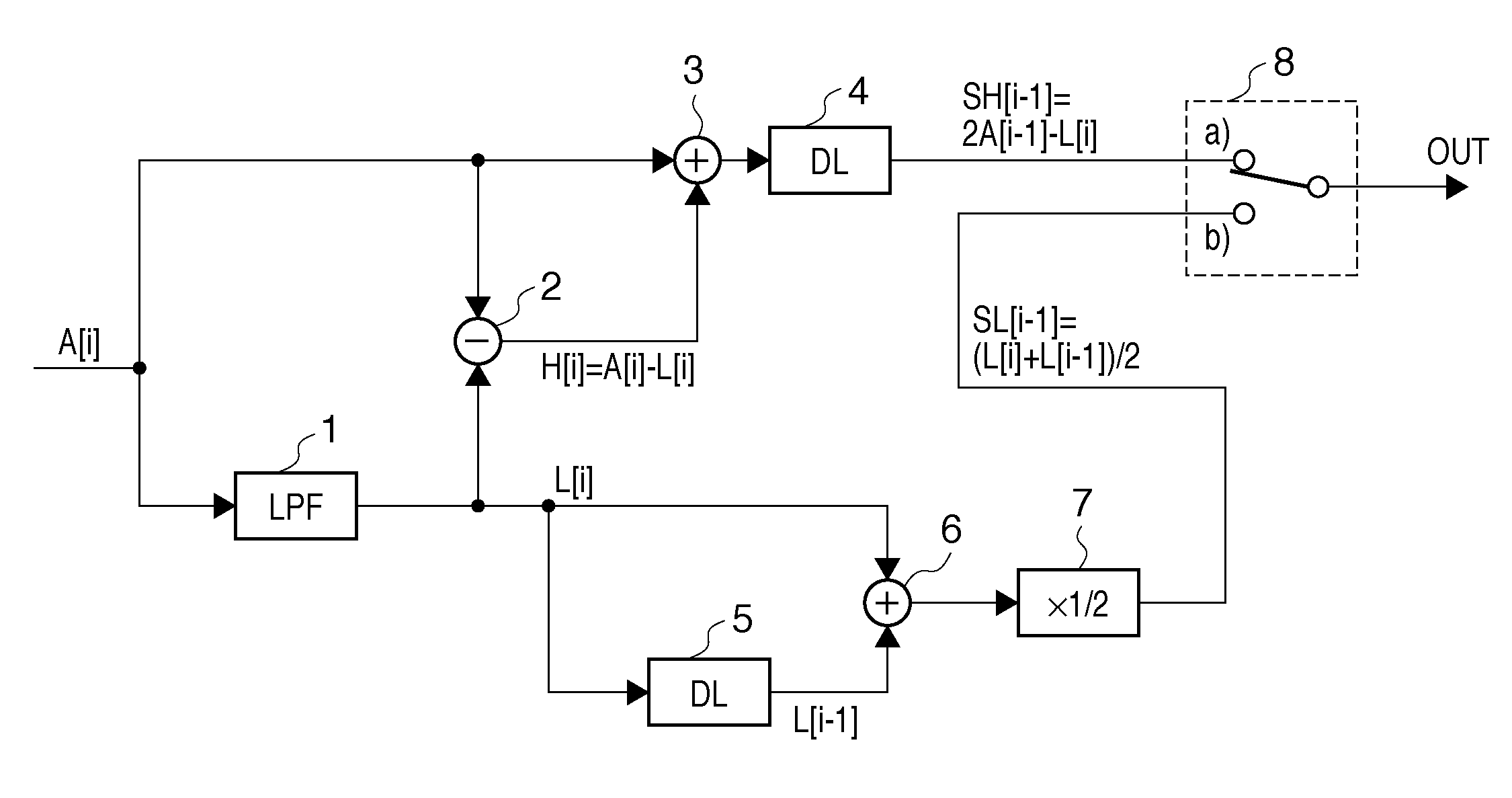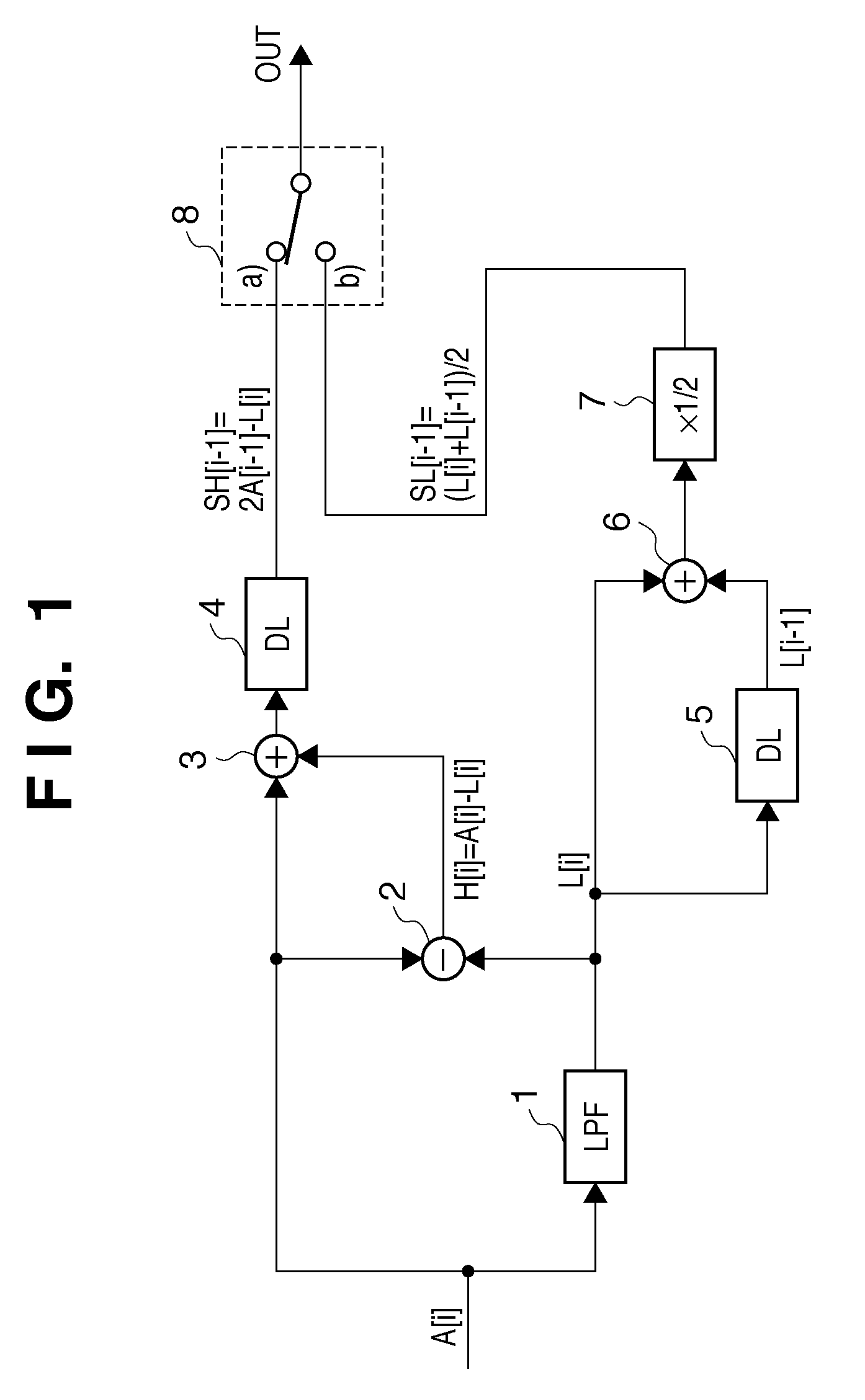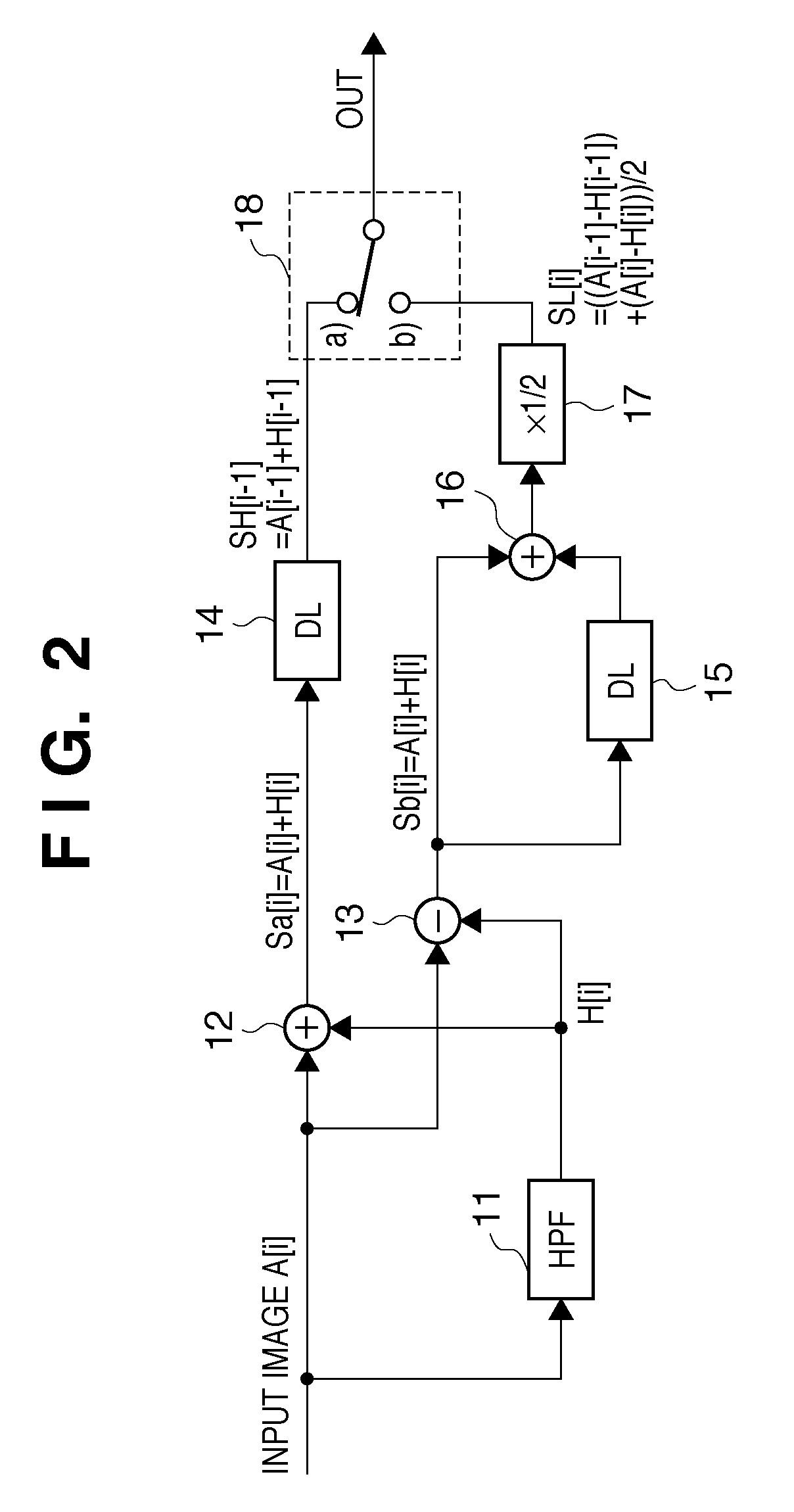Image processing apparatus and method of controlling the same
a technology of image processing and display device, which is applied in the direction of selective content distribution, television systems, instruments, etc., can solve the problems of distortion of display image in actual pursuit and the inability to make full use of the dynamic range of display devices, and achieve the effect of light processing load
- Summary
- Abstract
- Description
- Claims
- Application Information
AI Technical Summary
Benefits of technology
Problems solved by technology
Method used
Image
Examples
first embodiment
Modification of First Embodiment
[0190]An example will be described in which a process equivalent to the first embodiment is implemented by a computer program. An apparatus for executing the computer program can be an information processing apparatus such as a personal computer (PC). The structure and features of the hardware comprising a PC are well known, so will not be described here. We assume that a moving image data file containing m frames per unit time is already stored in a storage device (or storage medium) such as a hard disk. An example will be described in which the CPU executing the application (computer program) of this modification converts the file into moving image data to be played back at twice the frame rate, that is, 2m frames per unit time, and saves the conversion result in the hard disk as a file. The conversion target moving image data is stored in the storage device. The moving image data after double-rate conversion is also stored in the storage device. He...
second embodiment
[0207]In the second embodiment, an example of a solution to the above-described second problem will be described. FIG. 17 is a block diagram showing an arrangement of an image processing apparatus according to the second embodiment. The same reference numerals as in FIG. 1 denote the same components in FIG. 17, and a description thereof will be omitted.
[0208]The second problem occurs when each frame of an input image is filtered to separate a spatial high-frequency component related to motion blur and a spatial low-frequency component related to flicker. That is, in a method of displaying an image by concentrating the spatial high-frequency component to one sub-frame and distributing the spatial low-frequency component to both sub-frames, it is impossible to make full use of the dynamic range of the display device.
[0209]“One sub-frame” indicates one of two double-rate frames corresponding to the input image frame. “Both frames” indicates both of the two double-rate frames correspond...
third embodiment
[0278]In the third embodiment, a solution to the above-described second problem will be described.
[0279]In the above-described second embodiment, the distance constant value d of the LPF is appropriately controlled to suppress the ratio of the high-frequency component from becoming excessively high. That is, this prevents the brightness level of display from being saturated (i.e., SH[i]>100%, or SH[i]<0 mathematically).
[0280]The third embodiment proposes a method of preventing a problem even when saturation of the display brightness level (i.e., SH[i]≧100%, or SH[i]<0 mathematically) still occurs after the above-described process. That is, SH[i] and SL[i] which are calculated once are corrected again to prevent any problem.
[0281]FIGS. 21 and 22 show a case in which the method of the embodiment is applied to the prior art in FIG. 6.
[0282]In the prior art shown in FIG. 6, SH[i] and SL[i] can be expressed by
L[i]=LPF(A[i])
H[i]=A[i]−L[i]
SH[i]=L[i]+2H[i]
SL[i]=L[i]
[0283]In the third embodi...
PUM
 Login to View More
Login to View More Abstract
Description
Claims
Application Information
 Login to View More
Login to View More - R&D
- Intellectual Property
- Life Sciences
- Materials
- Tech Scout
- Unparalleled Data Quality
- Higher Quality Content
- 60% Fewer Hallucinations
Browse by: Latest US Patents, China's latest patents, Technical Efficacy Thesaurus, Application Domain, Technology Topic, Popular Technical Reports.
© 2025 PatSnap. All rights reserved.Legal|Privacy policy|Modern Slavery Act Transparency Statement|Sitemap|About US| Contact US: help@patsnap.com



